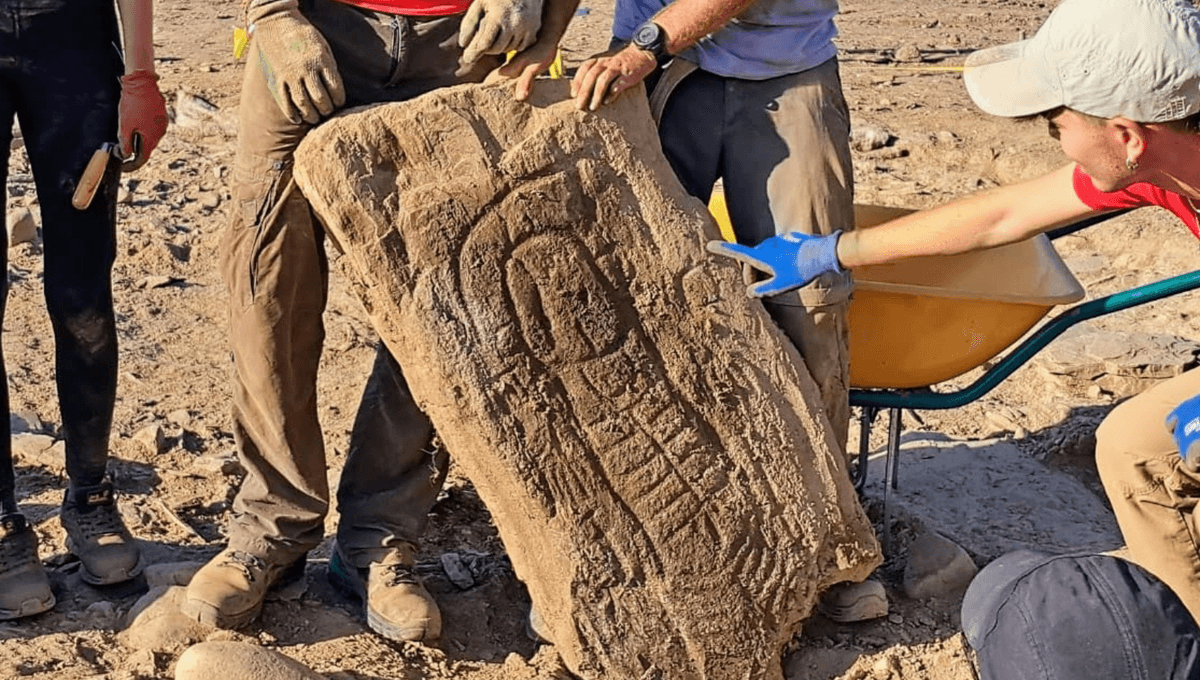
A team of archaeologists working in southwest Spain have discovered a Bronze/Iron Age funerary stone with intricate carvings that challenges a long-standing interpretation of gender representation and social roles in prehistoric ages. The discovery has the team pretty excited, and the results are likely going to shake things up quite a bit.
The excavation is located in the 3,000-year-old funerary complex of Las Capellanías, in the municipality of Cañaveral de León, Spain. Here, researchers have unearthed an ancient stela, a standing funerary stone slab featuring carvings that mark the site as belonging to important individuals. Essentially, it was a kind of tombstone, though sometimes they could be used for dedication and commemoration as well.
On this particular stone, a human figure is depicted with carefully carved face, hands, and feet. The figure is shown wearing a headdress and a necklace – traditionally symbols associated with the female form – but the figure is also holding two swords and has male genitals.
The mixing of these features on the funerary stone has led the archaeologists to reconsider their understanding of gender when represented by these carvings, which may have been more fluid than previously assumed. It would seem that such symbolism was not necessarily restricted to one gender or another.
The site at Las Capellanías
This is not the only stela to have been found at this site. So far, the archaeologists have discovered two other stones which are providing valuable insights into the funerary rituals from this era.
Interestingly, the site of the Las Capellanías funerary complex is located in what would have been a significant natural pathway that linked it to a river basin. Such a connection would have made it a kind of “communications highway of its day”, Durham University explained in a statement.
The team believe the location of Las Capellanías on such a highway is significant in itself. It is possible that the stelae also worked as territorial markers, not just funerary stones.
Source Link: 3,000-Year-Old Funerary Stone Suggests Prehistoric Social Gender Roles Were More Fluid Than Thought